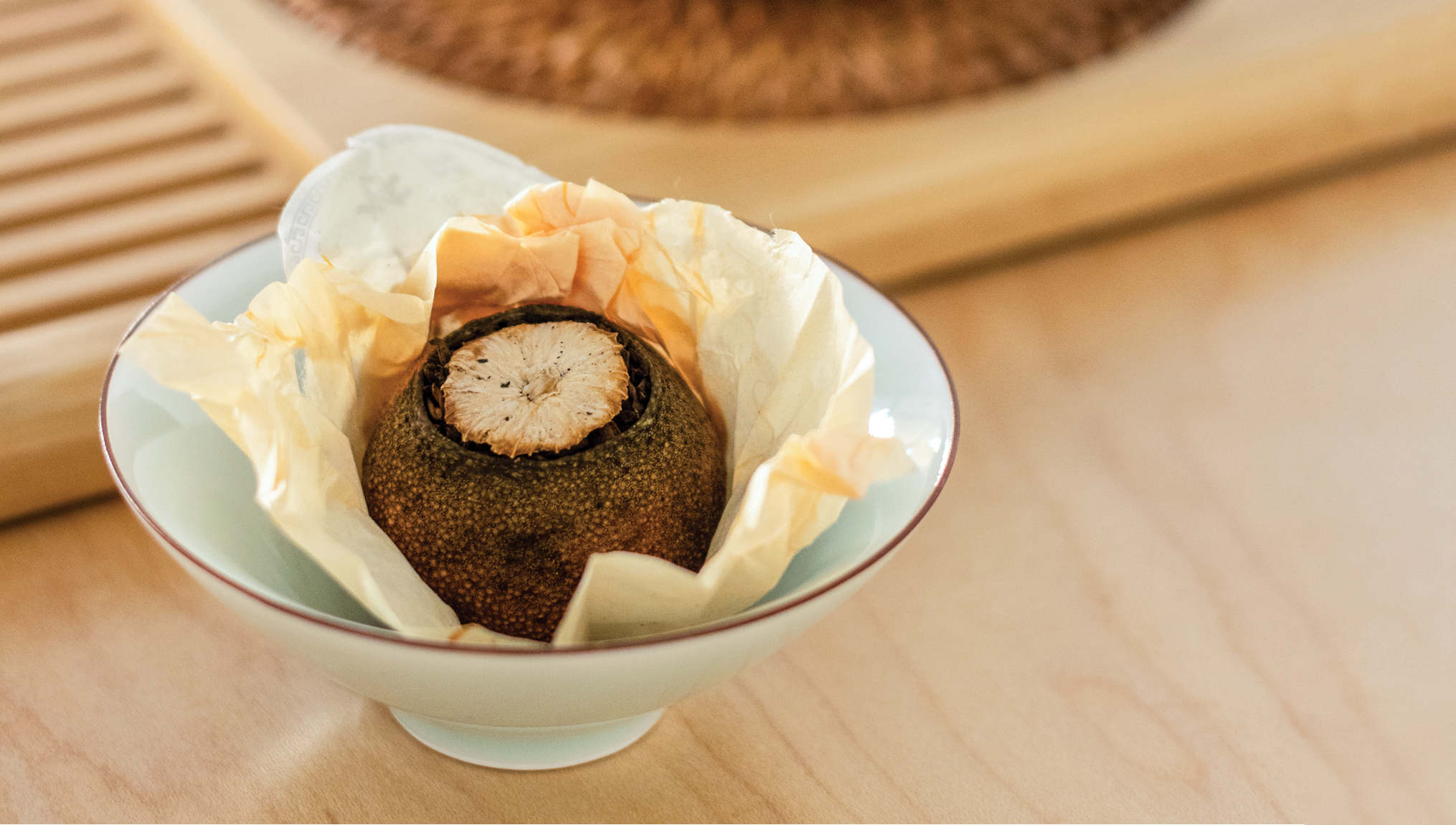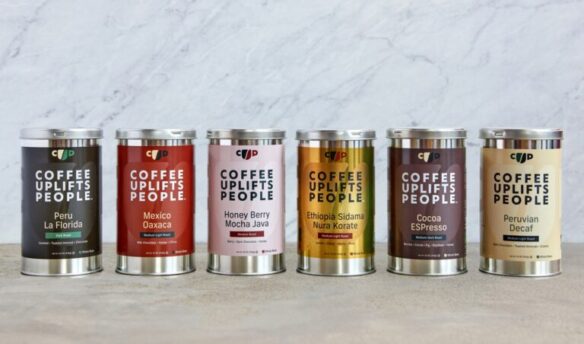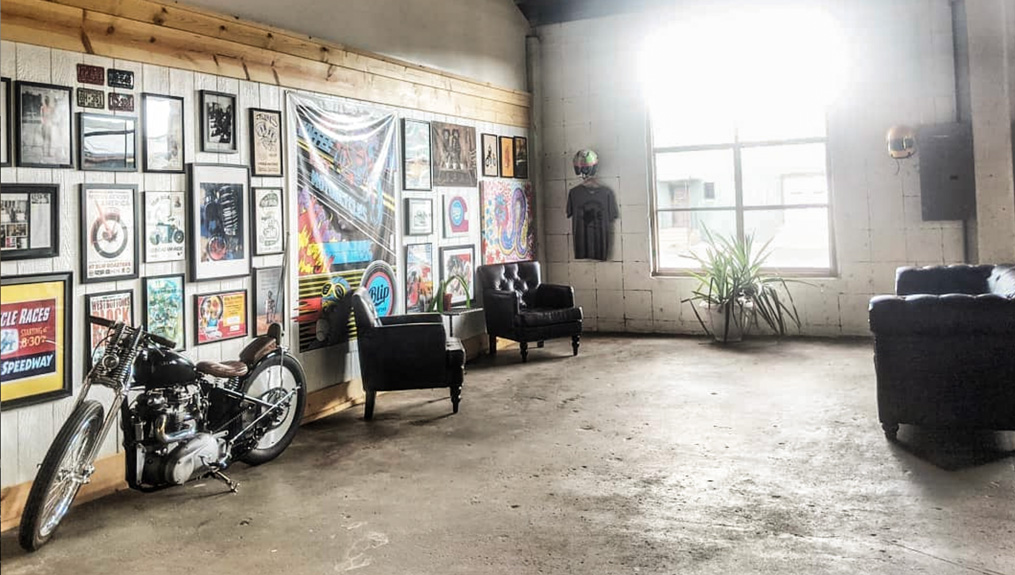Tangerine Pu-erh tea at Steep LA. All photos by Anna Mariani
When Samuel Wang and Lydia Lin opened their teahouse Steep LA in Los Angeles’ Chinatown last July, they were surprised to find out that it was exactly what local tea aficionados had been waiting for.
Because of the widespread popularity of boba tea, a sweet tea-and-milk concoction with tapioca pearls invented in Taiwan, they thought initially that they were going to spend a lot of time convincing people to try a beverage with less sugar and without boba. As it turned out, that was not necessary: customers regularly tell Wang and Lin that a tea concept like Steep LA was long overdue.
Slowing Down to Share Good Tea
The concept for Steep LA was born at the intersection between the idea of offering good tea and slow living, a lifestyle both Wang and Lin believe in.
“Tea is one way to practice slow living,” explains Wang. “You naturally have to wait for the tea to steep, naturally have to pour. It forces you to focus and pay a little more attention and still you’re able to have a conversation.”
That’s where the Chinese tea ceremony, also known as kung fu or gongfu tea, comes into play. Originally, traditional Chinese tea ceremony was a social gathering where tea was shared. Wang admits that today even in China a lot of tea rooms treat tea like coffee—an individual experience rather than a shared one. To incorporate tea ceremony into their concept, Wang and Lin retained the traditional social element but packaged it into a more modern way, easily accessible to seasoned tea drinkers and first timers alike.
This is immediately evident from Steep LA’s interior design. The space, which is reminiscent of a Scandinavian living room, exudes calm with its neutral color palette, while its décor, which includes two sofas, armchairs, and plenty of green plants, invites customers to slow down. Inspiring the overall design is the famous designer piece, the Y Chair by Hans Wegner.
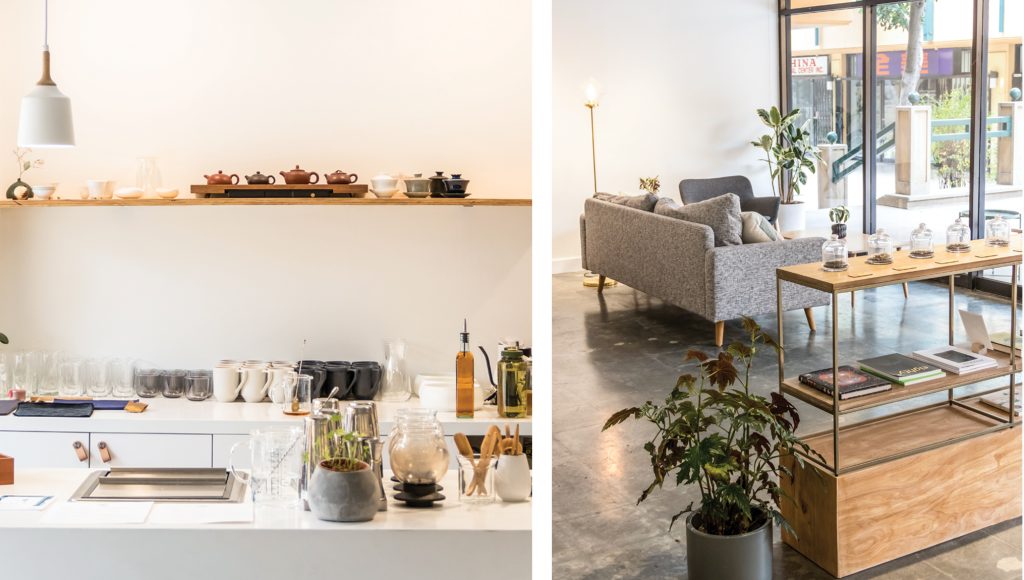
“I wanted the space to have a Chinese influence but I didn’t want it to be Chinese,” says Wang. “Hans Wegner designed the chair based on a Ming dynasty chair. To me that’s the most Chinese-Scandinavian design that’s available. We built everything else around it. All the other chairs and tables are mid-century modern.”
In addition to the interior design, the tea menu encourages customers to enjoy tea together.
“If people have a conversation while pouring hot water in a teapot and drinking tea, we’re happy,” says Wang. “It’s not supposed to be expensive or complicated, it just needs some love and friendship and a social aspect to it”.
Steep’s Kung Fu Tea service, which comes with pastries and dried fruit, is ideal to be shared by up to four people. Customers get a sleek Fellow temperature-controlled kettle, a tea tray, and teaware, and can try their hand at tea ceremony with guidance about temperature and steeping time and a handy timer. Having all variables as controlled as possible, customers can focus on enjoying their tea and engaging in conversation, if they wish to do so.
A Streamlined Tea Program
Wang and Lin personally source the tea served at Steep LA. Wang mostly sources oolong and black teas from Taiwan, whereas Lin sources green tea and pu-erh from China. Beyond Kung Fu Tea, the tea menu also includes Shaken not Stirred (choice of tea with optional milk and sugar, shaken to order) and Cold Brewed. Every drink, with the exception of Kung Fu Tea, comes in a single size of 16 ounces. With a small team and little storage space, Wang and Lin had to make sure everything was streamlined and efficient. A single size ensures less formulas and ratios to remember and also less single-use cups overall.
Tea First, But There’s Food Too
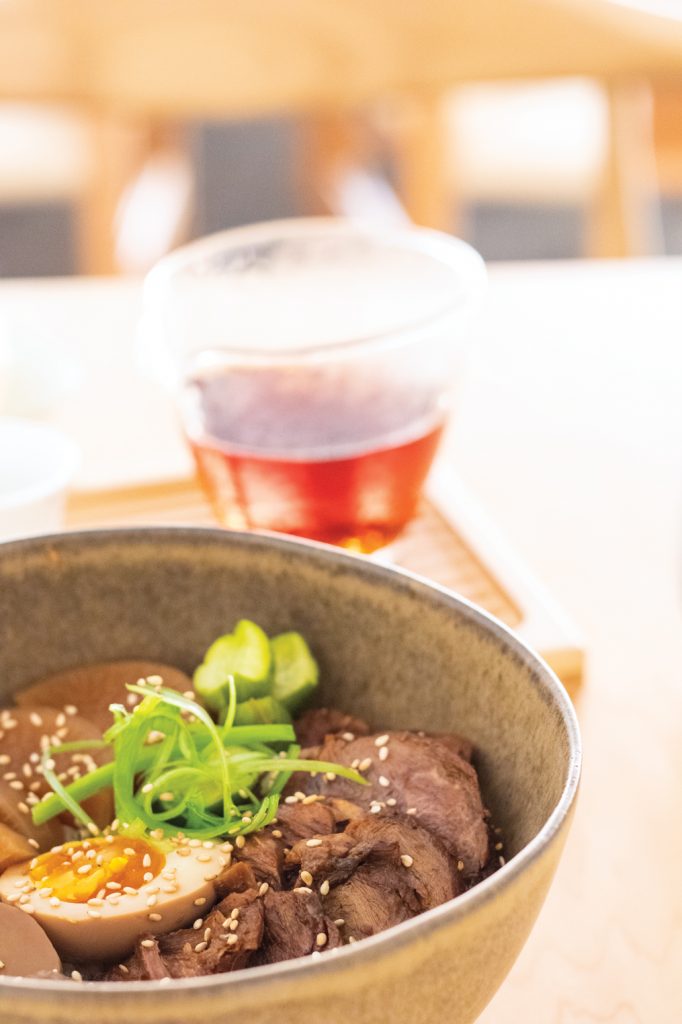
Serving food was not in the original plans for Steep LA until their landlord made it part of the lease agreement. However, the small selection of food items from their in-house kitchen—including small bites like radish cakes and tea-infused tomatoes, as well as filling and flavorful bowls—has garnered the attention of food-centric press, even though it is carefully designed not to overshadow the tea experience.
“How do we make sure that the food doesn’t affect the way you taste tea?” says Wang. “Whether it’s food having tea as an ingredient or food not taking away from the flavor of tea, we’re a tea house first. That’s why we won’t have anything on the menu that is super spicy or super sweet.”
Breaking Down Barriers
The name “Steep LA” and the logo were born out of a bilingual thought process: “steep” is a word that is specifically associated with tea, unlike “brew,” which is used for coffee, beer, and other beverages.
“In Chinese, there’s also a separate word to express a more refined way to brew tea and that Chinese word is our logo,” says Wang. “I wanted it to be equally Chinese and English.”
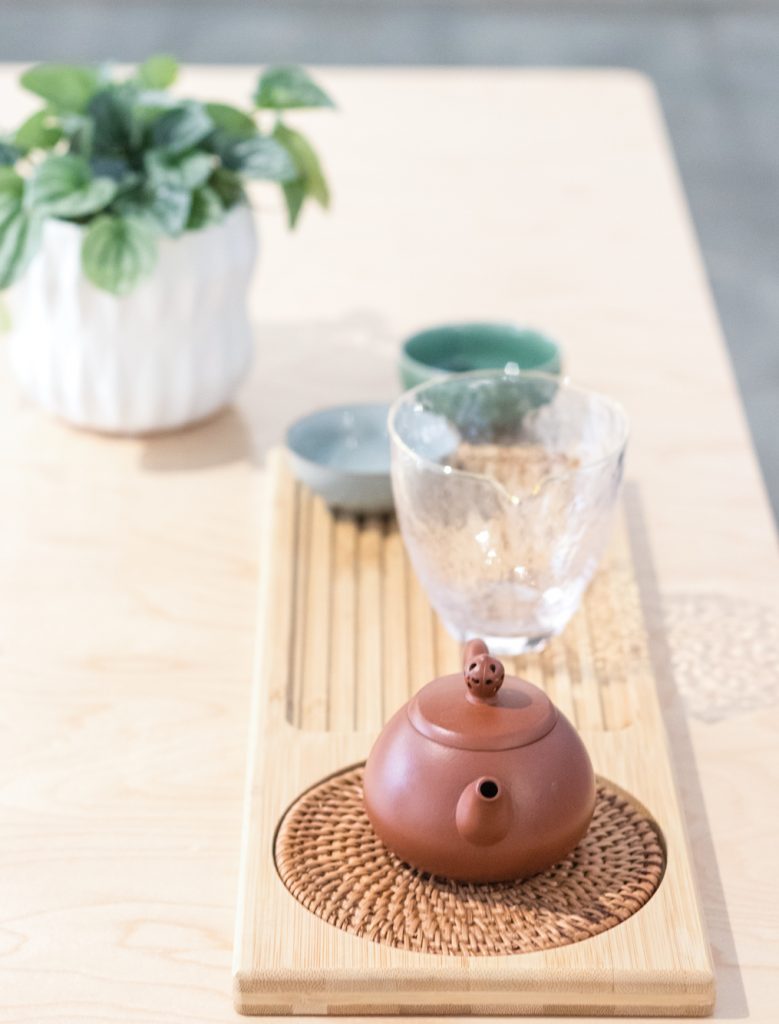
At the same time though, Wang didn’t want people to feel a cultural or language barrier.
“This is very much an American establishment selling Chinese tea,” he says. “I want to make sure that people understand that there’s no barrier here; English is spoken here, the menu is only in English. We want our customers to feel like they don’t need to take a language class or understand Chinese culture to be here.”
Breaking down barriers and bringing the local community together are important goals to Wang and Lin, which is why Steep LA is also an event space hosting recurring dumpling making and tea tasting classes, a photography exhibition, and, in the future, tea and food pairing events and chef collaborations.
Pioneering a lifestyle of slow living while bringing people together is possible—Steep LA is doing it by changing the way people see the traditional Chinese tea ceremony.



